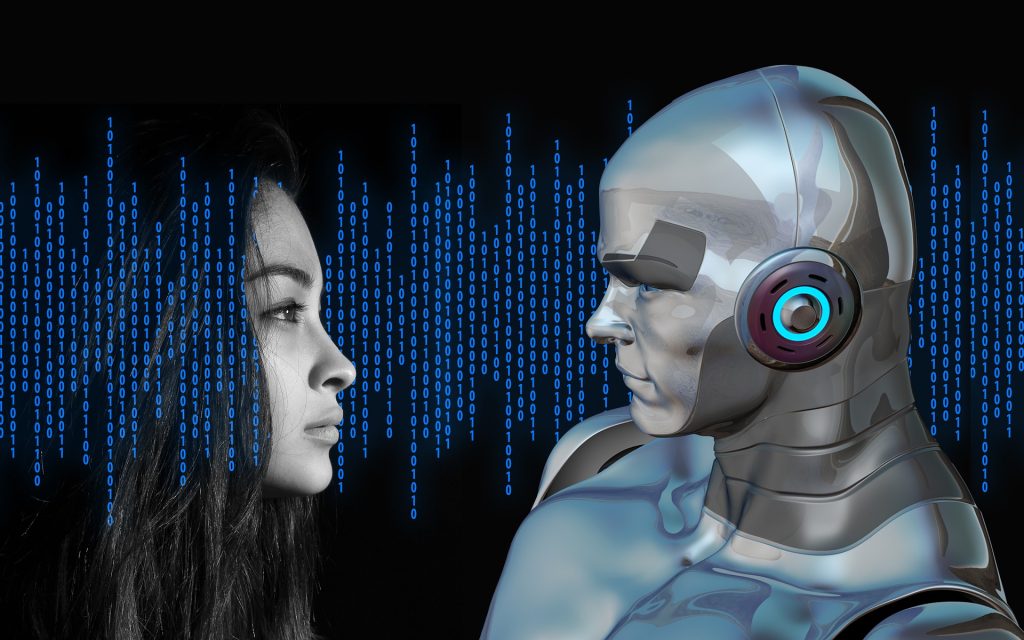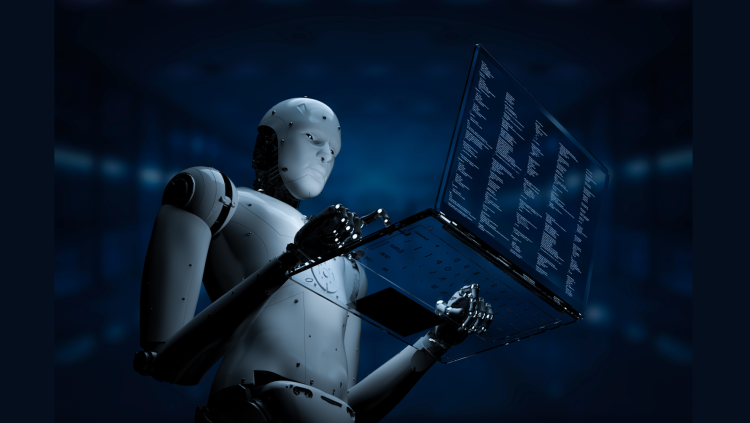Introduction
The role of robots in society has evolved dramatically over the past few decades. What was once confined to science fiction is now becoming a daily reality in industries ranging from manufacturing and healthcare to logistics and customer service. As technological advancements continue to accelerate, robots are expected to play an increasingly significant role in shaping the future of human society. With the integration of artificial intelligence (AI), machine learning (ML), and autonomous systems, robots are pushing us toward a more intelligent and automated future, where human effort is optimized, and daily life becomes more efficient, safe, and productive.
In this article, we will explore how robots are expected to revolutionize various sectors, their growing influence on the workforce, and the challenges and opportunities they present. We will also delve into the ethical, societal, and technological considerations that need to be addressed as robots become an integral part of our future.
1. The Evolution of Robots: From Industrial Tools to Everyday Assistants
1.1 Early Robotics: The Industrial Revolution
The first significant leap in robotics came during the Industrial Revolution, where robots—then primarily mechanical devices—were used in manufacturing environments to streamline repetitive tasks. These early robots were designed to replace human labor in environments where automation was necessary for mass production. However, they were limited in their capabilities, often requiring direct human oversight and control.
As the years progressed, innovations in computing, artificial intelligence, and sensor technology allowed robots to evolve from simple, rigid machines into more versatile and intelligent systems. Industrial robots are now highly flexible, capable of performing a variety of tasks ranging from welding and assembly to painting and packaging in a highly automated, efficient, and precise manner.
1.2 The Advent of AI and Machine Learning in Robotics
The integration of AI and ML into robotics is perhaps the most significant leap forward in the field. By incorporating advanced algorithms and data-processing capabilities, robots now possess the ability to learn from their environment, adapt to new tasks, and make decisions based on real-time data. This has expanded their utility far beyond traditional manufacturing.
For example, in robot-assisted surgery, robots can now perform complex medical procedures with greater precision and less risk to patients. In autonomous vehicles, robots (or self-driving cars) can navigate through cities, understand traffic patterns, and make decisions in dynamic environments. These advances have made robots more capable of handling tasks that were previously too dangerous, complex, or delicate for human workers.
2. The Expanding Role of Robots Across Sectors
2.1 Robots in Healthcare
The healthcare sector has seen tremendous benefits from the integration of robots. Surgical robots like da Vinci and MAKO allow surgeons to perform minimally invasive procedures with enhanced precision and smaller incisions. These robots are not only more accurate but also reduce recovery times, minimize human error, and enable patients to receive better outcomes.
In addition to surgery, robots are increasingly used for patient care in hospitals and nursing homes. These robots assist with tasks such as lifting patients, monitoring health parameters, and delivering medications. With the aging global population, the demand for such robots is expected to grow, offering a sustainable solution to meet the care needs of the elderly and disabled.
2.2 Autonomous Vehicles and Transportation
One of the most anticipated uses of robots in the future is in the field of transportation, particularly autonomous vehicles (AVs). Self-driving cars, trucks, and drones are already being tested and have the potential to revolutionize how goods and people are transported across the globe.
Autonomous vehicles promise several benefits:
- Increased safety: AVs can reduce human error, which is responsible for the majority of road accidents.
- Efficiency: Autonomous cars can reduce traffic congestion and improve fuel efficiency by optimizing driving patterns.
- Cost savings: Self-driving trucks can reduce labor costs in the logistics industry.
As these technologies continue to improve, autonomous vehicles will become more widespread, leading to an even greater transformation of the transportation industry.
2.3 Robots in Manufacturing and Automation
Manufacturing has been one of the most significant beneficiaries of robotics and automation. Robots in manufacturing—such as assembly line robots, welding robots, and packaging robots—have drastically reduced the need for human labor in many repetitive and dangerous tasks.
These robots can operate 24/7, increasing productivity and ensuring high precision. They are particularly valuable in industries where consistency and quality control are essential, such as in electronics or automotive manufacturing.
However, the future of manufacturing goes beyond just replacing human workers with robots. The next frontier involves collaborative robots (cobots) that work alongside humans, enhancing human capabilities without the need for full automation. Cobots can handle heavy lifting, assist in assembly, or perform tedious tasks, while humans focus on decision-making, problem-solving, and tasks that require creativity and expertise.
2.4 Service Robots in Daily Life
Service robots are also becoming more integrated into daily life. Whether it’s a vacuum cleaning robot like Roomba, or delivery robots in urban environments, service robots are designed to make life easier and more efficient. They handle mundane and repetitive tasks, allowing humans to focus on higher-value activities.
In the future, we can expect to see even more advanced service robots. Companion robots designed to provide social and emotional support to the elderly or those with special needs will become more common. Personal assistants will become more intelligent, capable of managing complex household tasks, from grocery shopping to cooking.

3. The Impact of Robots on the Workforce
3.1 Job Creation and Transformation
One of the most debated issues surrounding the rise of robots is their impact on employment. While it’s true that robots may replace certain jobs, especially in sectors like manufacturing, there is also the potential for the creation of new jobs. Robots may take over routine tasks, but this frees up human workers to focus on more complex, creative, and strategic tasks.
For instance, the demand for robot programmers, AI specialists, robot maintenance engineers, and data scientists is expected to surge. The key challenge for society will be ensuring that workers who are displaced by automation have the skills to transition to these new roles.
3.2 Re-skilling and Education
The increasing use of robots in various fields will drive the need for re-skilling and continuous education. For workers in industries affected by automation, reskilling initiatives will be essential to ensure that they can transition to new, more sophisticated roles.
For example, a factory worker who used to operate an assembly line robot may need to learn how to troubleshoot, program, and maintain such robots. Educational institutions and companies will play a crucial role in providing training programs to meet these needs.
4. Ethical Considerations and Societal Impact
As robots become more autonomous, ethical questions surrounding their use will become more pressing. Some of the most significant concerns include:
- Privacy: Robots, especially those used in personal assistance or healthcare, collect vast amounts of personal data. Ensuring that this data is securely stored and that privacy is maintained is a major challenge.
- Accountability: When robots make autonomous decisions—especially in critical areas like transportation or healthcare—who is responsible if something goes wrong? Legislation will need to evolve to address liability and accountability issues.
- Social impact: The widespread use of robots may widen the gap between wealthy individuals or companies that can afford cutting-edge technology and those who cannot. Ensuring that the benefits of robotic technology are distributed equitably will be essential.
5. The Future of Robots in Society: A More Intelligent, Automated World
5.1 Enhancing Human Potential
The ultimate goal of robotics is not to replace humans but to enhance human potential. Robots will increasingly work alongside humans, augmenting their capabilities and enabling them to focus on higher-order tasks that require creativity, decision-making, and emotional intelligence. The future of robots is one of synergy, where human intelligence and robotic precision create a more effective and productive world.
5.2 Automation for a Smarter Society
Robots will lead the way toward a smarter, more efficient society. In the future, cities will be populated with intelligent robots that perform a variety of tasks, from waste management to security surveillance. With advancements in AI and machine learning, robots will help create sustainable, eco-friendly solutions for urban living, making cities safer and more livable.
5.3 A Vision of a Robot-Enhanced Future
Looking ahead, we can envision a world where robots work seamlessly across all sectors—healthcare, transportation, manufacturing, and more—optimizing every aspect of human life. Through continued advancements in AI, robotics, and automation, we will create a future that is smarter, safer, and more productive. Robots will no longer be viewed as a distant technological marvel but as an integral part of our daily lives.
Conclusion
The integration of robots into various sectors of society represents a turning point in human history. Robots, driven by AI control algorithms and advanced machine learning, will increasingly play a vital role in reshaping industries, enhancing productivity, and improving quality of life. However, as we move toward an increasingly automated world, it is essential that we address ethical concerns, prepare for workforce shifts, and ensure that the benefits of robotics are accessible to all. The future is undoubtedly one of greater intelligence, autonomy, and synergy between humans and machines.







































